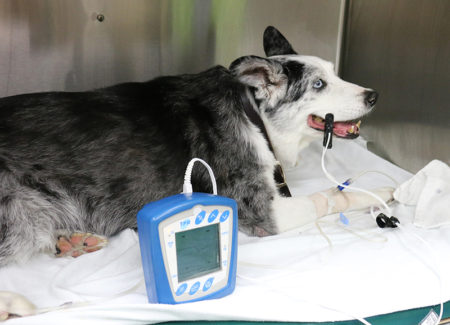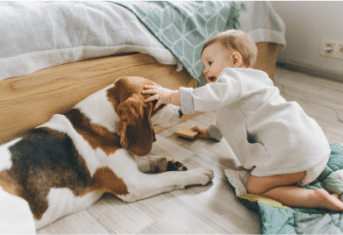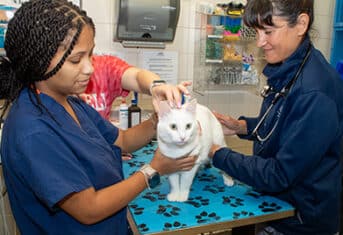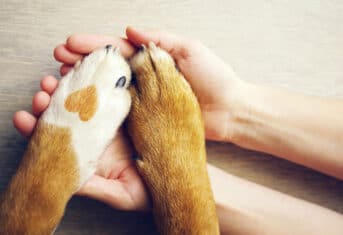Everyday Medicine: What is Pulse Oximetry?

Everyday Medicine: What is Pulse Oximetry?
Everyday medicine is an intermittent series of blog posts highlighting tests, treatments and procedures commonly used at AMC. Some past examples of this type of blog post include “What are Vital Signs” or “Five Reasons Veterinarians Love Fluid Therapy.” Today’s blog post will tackle the topic of pulse oximetry, a common monitoring tool used at AMC.
In the last publication of Everyday Medicine, I wrote about oxygen therapy and how veterinary patients depend on this vital element. Today, I am writing about a non-invasive method we use to monitor oxygen therapy, pulse oximetry.
What is a Pulse Oximeter?
A pulse oximeter is a portable device with two main parts: 1) a box that contains the software and a display panel, and 2) a sensor which attaches on one end to the box and on the other end to your pet. In people, the sensor is often attached to a finger, toe or ear lobe, but the hairy nature of paws and the thick pads make toes a less than ideal location in pets. Veterinarians typically attach the probe to the tongue or cheek, or the web of skin between the toes in anesthetized patients. In conscious patients, we use the ear flap.
What Does a Pulse Oximeter Measure?
The pulse oximeter measures how much oxygen is attached to the hemoglobin molecules within the red blood cells. The machine display reports the percent of the hemoglobin molecules that have oxygen attached to them, a value called the oxygen saturation. In a normal dog or cat, we expect the oxygen saturation to be near 100%. When oxygen saturation is less than approximately 94%, oxygen therapy is administered.
How is Pulse Oximetry Used?
I bet AMC veterinarians use the pulse oximeter a couple of dozen times a day in a variety of situations. The most common use is as a monitoring tool for pets undergoing general anesthesia. Oxygen gas is used as part of the anesthetic protocol. If the pulse oximeter indicates the oxygen saturation is falling in an anesthetized pet, it is a clue for veterinarians and veterinary technicians monitoring the pet to adjust the anesthetic and oxygen levels. In pets with diseases affecting the lungs, like pneumonia or asthma, the pulse oximeter can assess the impact of oxygen therapy and also improvements in the pet’s underlying disease following administration of antibiotics or anti-inflammatory drugs.
Simple and indispensable, the pulse oximeter is an essential device for the daily practice of veterinary medicine.































